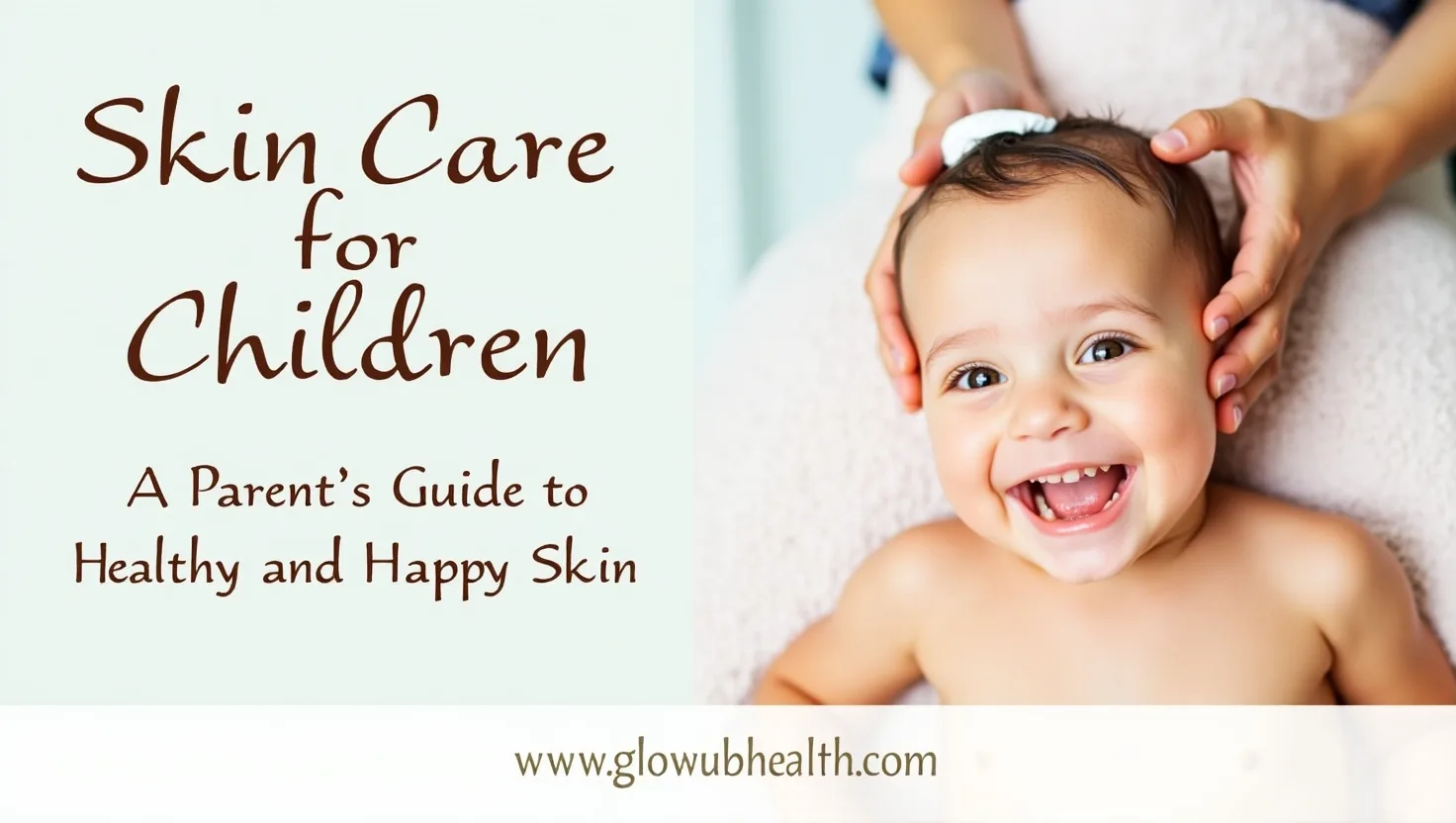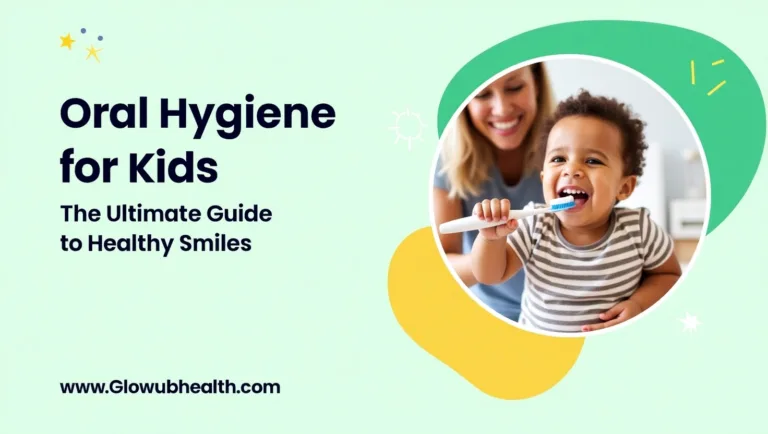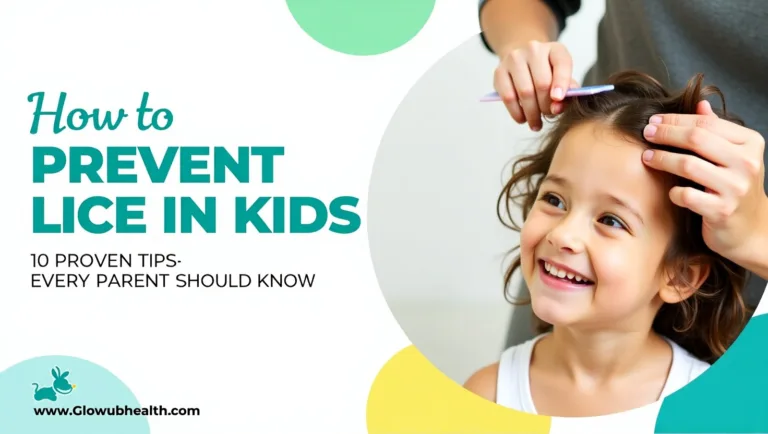Skin Care for Children : A Parent’s Guide to Healthy and Happy Skin
As parents, we want nothing but the best for our children’s health, and that includes taking care of their delicate skin. Children’s skin is far more sensitive than adults’, which means it requires special attention to keep it soft, healthy, and protected. Establishing a good skincare routine early on can help prevent common issues like dryness, irritation, and even conditions like eczema.
In this guide, we’ll walk you through the essentials of skincare for children, from understanding what makes their skin unique to the best practices and products to keep it in top condition.
This content is for informational purposes only and does not substitute professional medical advice. If your child has specific skin conditions or concerns, please consult a pediatrician or dermatologist.
What Is the Best Care Routine for Kids?
Establishing the best care routine for kids starts with understanding the basics. It doesn’t need to be complicated—simplicity is key when it comes to children’s skin care. A good routine will keep their skin clean, hydrated, and protected from harmful elements.
Essential Steps in a Children’s Skin Care Routine
- Cleansing: Use a gentle, mild cleanser free from harsh chemicals to wash your child’s face and body. Avoid soaps with strong fragrances or artificial dyes.
- Moisturizing: Apply a hydrating moisturizer after cleansing to keep your child’s skin soft and hydrated. Look for a hypoallergenic formula that’s safe for sensitive skin.
- Protection: For children, protection from the sun is crucial. Always apply sunscreen with an SPF of at least 30 before going outdoors.
Products You Can Trust for Your Kid’s Skin
When choosing skin care products, opt for ones specifically formulated for children’s skin. Look for dermatologist-approved products that are free from parabens, phthalates, and artificial fragrances. Always check for certifications like hypoallergenic or pediatrician-tested to ensure the product is safe for your child.
Can a 10-Year-Old Use Vitamin C Serum?
Vitamin C is a powerful antioxidant that helps with skin regeneration and protects against environmental damage. But can a 10-year-old use vitamin C serum?
The Benefits of Vitamin C for Children’s Skin
Vitamin C can benefit children’s skin by reducing the appearance of dark spots and promoting a more even skin tone. It’s also known to help boost collagen production, which keeps skin looking firm and youthful.
When Is the Right Age to Introduce Vitamin C to a Child’s Skin Care?
While Vitamin C is beneficial, it’s usually best introduced at an age when children are around 10 years old. Before this age, their skin might be too sensitive for stronger products like serums. Always start with a mild, child-safe formulation and consult with a pediatrician or dermatologist.
How to Safely Use Vitamin C Serum for Kids
If you decide to incorporate Vitamin C serum, apply a small amount to the skin and monitor for any irritation. Always choose serums that are specifically formulated for children and avoid high concentrations of Vitamin C.
What Is the Simplest Skin Care Routine for Children?
A simple skin care routine for children focuses on hydration, gentle cleansing, and protection. The goal is to keep it easy, so it’s manageable for busy families.
Building a Simple Routine for Healthy Skin
- Gentle Cleanser: A mild, fragrance-free body wash or soap for the bath.
- Moisturizer: Apply a nourishing lotion after bath time to lock in moisture.
- Sun Protection: Sunscreen should be a daily habit to protect from harmful UV rays.
Key Ingredients for Gentle and Effective Skin Care
For a simple routine, choose products with nourishing ingredients like aloe vera, coconut oil, and shea butter. These are gentle, natural options that won’t irritate delicate skin and are hydrating at the same time.
Common Skin Care Issues in Children and How to Address Them
Children often face common skin issues such as dryness, eczema, and rashes. Understanding these conditions and how to address them can help you maintain healthy skin for your child.
Dealing with Dry Skin and Eczema in Kids
Eczema is a common condition that causes dry, itchy patches on the skin. To manage this, choose an eczema-friendly moisturizer and avoid hot water during bath time. Use fragrance-free, gentle skincare products to minimize irritation.
Preventing Acne in Pre-Teens and Teens
As your child grows into their pre-teen years, acne may begin to appear. Encourage them to wash their face twice daily with a gentle cleanser, and consider using non-comedogenic moisturizers that won’t clog pores. Avoid harsh acne treatments and consult a dermatologist for advice on gentle acne care.
Tips for Choosing the Best Skin Care Products for Children
Choosing the right skin care products for your child can be overwhelming with so many options available. Here’s how to narrow it down:
What to Look for in Kids’ Skin Care Products
- Hypoallergenic and Dermatologist-tested: These certifications ensure that products are safe for sensitive skin.
- Fragrance-Free: Fragrances can irritate children’s sensitive skin, so it’s best to avoid them.
- Natural Ingredients: Look for products with soothing, plant-based ingredients like aloe vera, chamomile, or calendula.
Avoiding Harmful Ingredients for Sensitive Skin
Stay clear of products containing parabens, sulfates, and synthetic dyes. These chemicals can cause irritation or allergic reactions in children’s skin.
The Importance of Sunscreen for Kids’ Skin Protection
Sunscreen is one of the most essential products in any child’s skin care routine. Protecting their skin from the sun can prevent skin damage and long-term health risks like melanoma.
Choosing the Right Sunscreen for Your Child
Opt for a sunscreen that provides broad-spectrum protection with an SPF of 30 or higher. Look for physical sunscreens with zinc oxide or titanium dioxide as the active ingredients, as they’re less likely to irritate children’s skin.
How to Apply Sunscreen Properly for Maximum Protection
Apply sunscreen generously to all exposed skin 30 minutes before heading outdoors. Don’t forget areas like ears, the back of the neck, and the tops of hands. Reapply every 2 hours, especially after swimming or sweating.
Can You Use Natural Skin Care for Children?
Natural skin care products can be a safe and effective alternative for children, as long as they are used with caution.
Benefits of Natural Ingredients for Kids’ Skin
Natural ingredients like lavender, chamomile, and jojoba oil can be soothing and gentle on children’s skin. They provide hydration and help protect the skin without the harsh chemicals found in some commercial products.
Common Natural Skin Care Options for Children
Look for organic lotions, balms, and oils made with natural extracts that are specifically formulated for children’s delicate skin.
Creating a Skin Care Routine for Children by Age Group
As children grow, their skin care needs will change. Here’s how to adapt the routine to suit their age:
Skin Care for Babies and Toddlers
For babies and toddlers, use mild cleansers and moisturizers that are free from fragrances and harsh chemicals. Diaper rash creams are also essential for sensitive areas.
Skin Care Tips for Kids Aged 5-10
For children in this age group, introduce a gentle facial cleanser and sunscreen as part of their daily routine. Hydration remains key to keeping their skin healthy.
Skin Care for Pre-Teens and Teens
As pre-teens and teens face hormonal changes, acne and oily skin may become a concern. Incorporate gentle acne treatments and continue using sunscreen regularly.
Expert Tips for Maintaining Healthy Skin for Children
Maintaining your child’s skin health is a long-term commitment. Here are some expert tips:
Staying Consistent with Skin Care Routines
The key to healthy skin is consistency. Ensure that your child follows their routine daily, even if it’s a simple one.
Hydration and Its Role in Skin Health
Encourage your child to drink plenty of water throughout the day. Hydration supports healthy, glowing skin and helps maintain its elasticity.
Conclusion
Creating a consistent skincare routine for your child is crucial for maintaining healthy, happy skin. By selecting the right products, protecting their skin from the sun, and sticking to a simple, effective routine, you lay the foundation for great skin care that lasts. Whether you’re wondering if a 10-year-old can use vitamin C serum or what the easiest skincare routine looks like, this guide has covered all the essentials to keep your child’s skin in optimal condition.
Consistency is key, and if you ever have any concerns, don’t hesitate to consult with your pediatrician to ensure you’re using the best products and practices for your child’s unique needs.
FAQ
1. What is the best skin care routine for kids?
The best skin care routine for kids includes three essential steps: cleansing with a mild, gentle cleanser, moisturizing with a hydrating lotion, and protecting with sunscreen. It’s important to keep the routine simple, especially for younger children, focusing on hydration and sun protection.
2. Can a 10-year-old use vitamin C serum?
Yes, a 10-year-old can use vitamin C serum, but it’s essential to choose a mild, child-safe formulation. Vitamin C helps with skin regeneration and protection, but make sure to start with lower concentrations and consult with a dermatologist before introducing it into your child’s routine.
3. What is the simplest skin care routine for children?
The simplest skin care routine for children includes a gentle cleanser, a hydrating moisturizer, and sunscreen for sun protection. This routine is effective in keeping the skin healthy without overwhelming kids with too many steps.
4. How can I prevent dry skin and eczema in my child?
To prevent dry skin and eczema in children, use fragrance-free and hypoallergenic moisturizers, bathe them in lukewarm water (not hot), and avoid harsh soaps. If eczema persists, consult a pediatrician for appropriate treatments.
5. At what age should I start using sunscreen on my child?
Sunscreen should be used on your child every day starting from infancy. Apply sunscreen with SPF 30 or higher, and reapply every two hours, especially if they’re swimming or sweating. Protecting your child from the sun early on is crucial in preventing long-term skin damage.
6. Can natural skin care products be used for children’s skin?
Yes, natural skin care products can be beneficial for children’s skin, especially those with sensitive skin. Look for products made with gentle, natural ingredients like chamomile, lavender, and aloe vera. Always check the product’s label to ensure it’s safe for kids.






